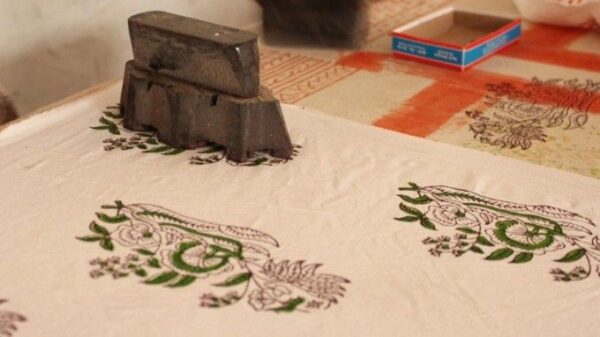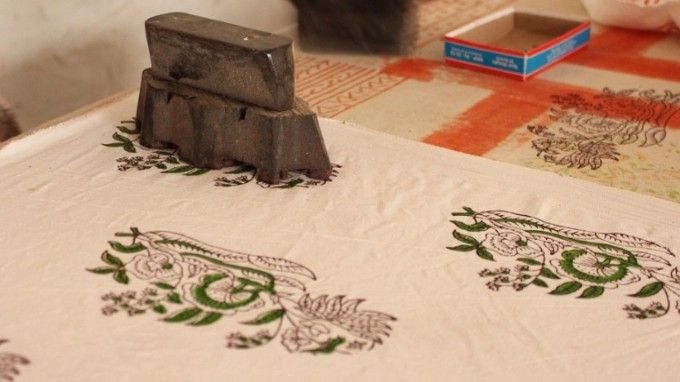Introduction
Every state in India is unique in its own way. Block printing is a timeless art which is such a technique that it has been used for generations by artisans. It was first discovered in China. Around the fourteenth century, it found its place in India. It was extremely loved by the Mughals and they promoted it. By the sixteenth century, it became so famous that it was exported worldwide from India. It is still a popular form of art and it is practiced in Jaipur, Sanganer, Bagru, Kutch and Bhopal. It is full of precision, creativity and beauty.
The Process
Every single step in block printing requires a fond eye for detailing and extreme precision. At first, the design is created. Some patterns are inspired by religious symbols like the ‘swastik’ or naturistic designs like trees and elephants. Some people even design abstract symbols that are primarily geometrical. These designs are carved on wooden blocks that are made out of teak or sal wood. The process of carving takes a lot of work and time as it has to be perfectly copied on the fabric.

The fabric is typically of silk, linen or cotton materials. Nowadays, sometimes artisans use synthetic materials as well. Firstly, the fabric is thoroughly washed so that no impurities can remain. Sometimes, natural dyes are applied on the fabric.
Once the carving on the blocks is completed, they are again dipped into dyes. Natural dyes are made from plants, minerals and insects. From the colorant that is gained, it is carefully applied on the raised surfaces of the block with a perfect hand.
The block is pressed on the fabric. Each and every block contains a singular part of the fabric so multiple blocks are used when there are prints of many colors. All blocks must align to create a perfect pattern so artisans generally do it with care. Sometimes, they apply pressure so that the color transfers seamlessly onto the fabric.

After printing, the fabric is dried and treated with a fixing agent. It is a mixture of tamarind, pomegranate peel which sets up the dye. The fabric retains its vibrant colors even after many washes. After printing, the fabric is ironed so that it gives a smooth look. Sometimes, artisans embroider the borders, which makes it look even more beautiful.
Regional Differences
Every state does block printing in its distinctive way. For example, in Bagru, the primary colors are indigo and deep red. Only floral and geometric patterns are used. On the other hand, in Sanganer, the block printing is more intricate and finer. They use an ocean of tones in their prints. The designing is very delicate and represent floral images and birds. They are often used on bedsheets or the fabric of dupattas. Meanwhile, in Ajrakh, the artisans use the ‘resist dyeing’ method for block printing. Their designs often have an extremely spiritual significance and are enthralled with deep colors like red, black and purple.
Modernisation
Today block printing is globally known. Many artists are promoting sustainability by using natural dyes that are plant based or mineral based. You may find abstract shapes that are blended with old world aesthetics which may even have pop culture inspired designs. That is why it has become attractive to younger consumers which connects the gap between old world designs and modern aesthetics.
Conclusion
It is such a diverse form of art that instead of being only designed on clothes, it is now used as home décor items like cushion covers and wall hangings. Block printing is not only a craft. It is an intricate art which binds ancient craft with modern innovations.
Author
Shreeja Mukherjee


